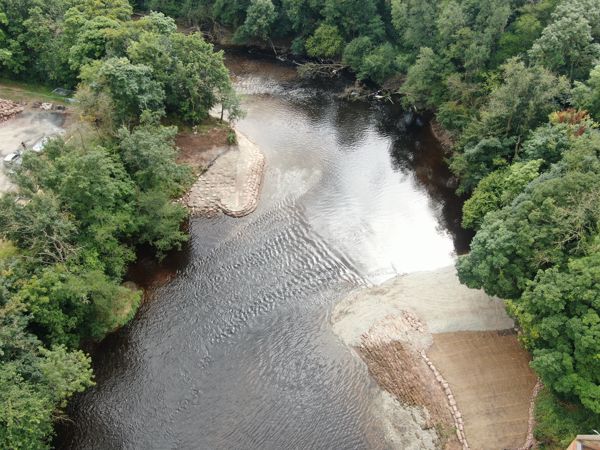Historic Transformation: River Dee revived thanks to Erbistock Weir removal

The River Dee is a step nearer to its natural state following the removal of Erbistock weir, a key part of the LIFE Dee River project.
The removal of the Erbistock weir marks a significant milestone for the EU-funded LIFE Dee River programme, offering a new era of ecological restoration for the River Dee. The completed work has already shown promising signs, with improvements being seen in the river's morphology, marking a return to its more natural state.
The removal of the weir has opened up an unimpeded passage for all fish species within the Dee, enhancing biodiversity and supporting the river’s ecosystems. Early observations indicate notable changes in the river's flow and sediment distribution, which are expected to further benefit local wildlife and improve overall river quality.
Heneb, the Trust for Welsh Archaeology, has been involved in the project and provided crucial insights during the planning and execution phases. Their investigation into the weir's history revealed that, contrary to earlier beliefs, the structure was built after 1850. This finding, derived from the examination of construction materials and historical artefacts discovered on-site, has refined our understanding of the weir’s impact on the river.
The work to remove the weir was completed by contractor S.E. Metcalfe a’i Gwmni, four weeks ahead of schedule, ensuring the successful and timely completion of this important environmental project.
Gethin Morris, LIFE Dee River Senior River Restoration Officer, said:
“We are thrilled to see the Erbistock weir removal project completed. This achievement not only represents a major step forward for river restoration on the Dee but also shows the commitment of everyone involved in our LIFE Dee River project.
“The positive changes we’re already witnessing in the River Dee are a testament to the hard work and collaboration of our partners and contractors. The weir’s removal will help to transform the Dee and its catchment by restoring it and its surroundings back to their natural state.”
